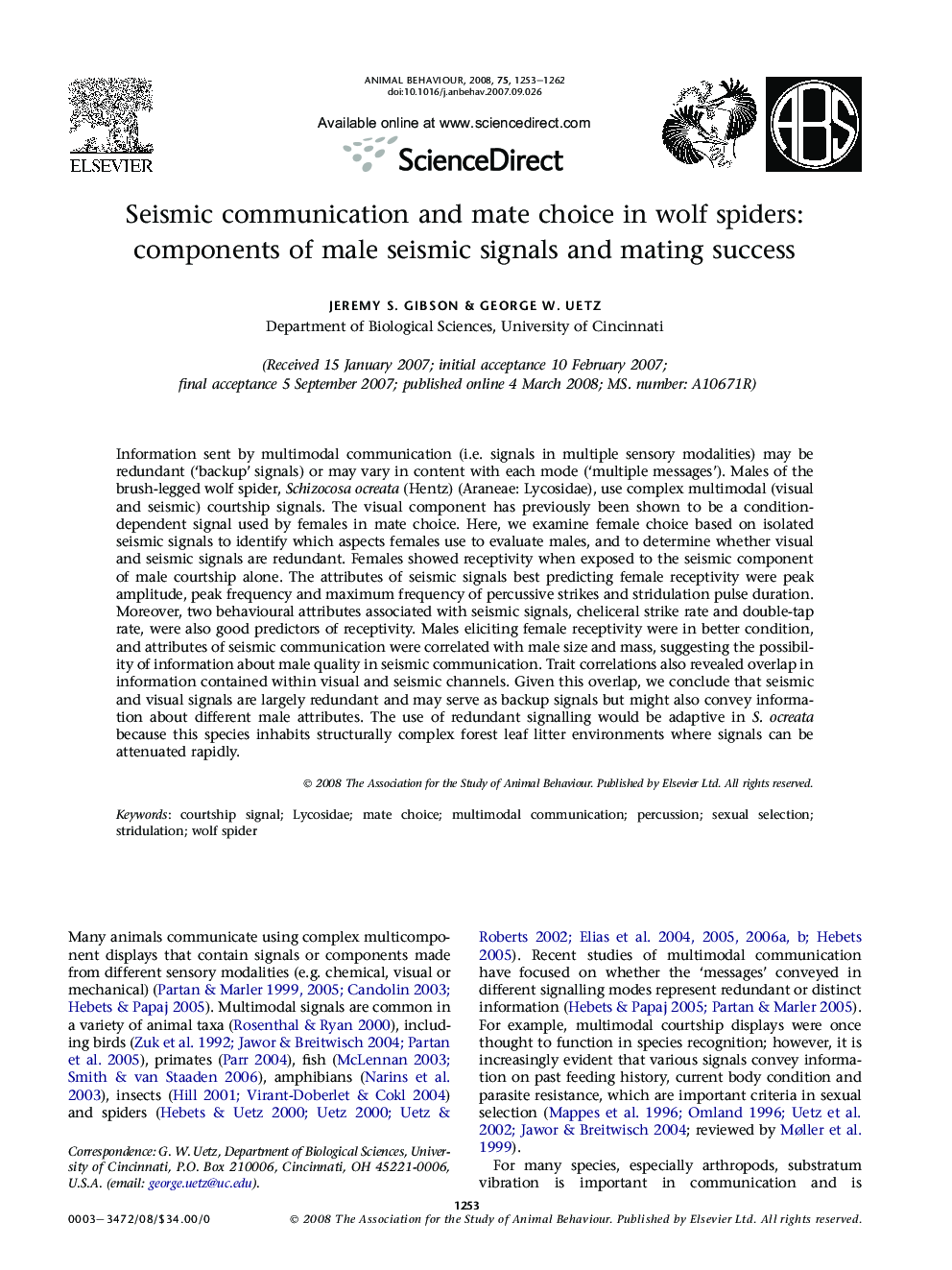| Article ID | Journal | Published Year | Pages | File Type |
|---|---|---|---|---|
| 2417740 | Animal Behaviour | 2008 | 10 Pages |
Information sent by multimodal communication (i.e. signals in multiple sensory modalities) may be redundant (‘backup’ signals) or may vary in content with each mode (‘multiple messages’). Males of the brush-legged wolf spider, Schizocosa ocreata (Hentz) (Araneae: Lycosidae), use complex multimodal (visual and seismic) courtship signals. The visual component has previously been shown to be a condition-dependent signal used by females in mate choice. Here, we examine female choice based on isolated seismic signals to identify which aspects females use to evaluate males, and to determine whether visual and seismic signals are redundant. Females showed receptivity when exposed to the seismic component of male courtship alone. The attributes of seismic signals best predicting female receptivity were peak amplitude, peak frequency and maximum frequency of percussive strikes and stridulation pulse duration. Moreover, two behavioural attributes associated with seismic signals, cheliceral strike rate and double-tap rate, were also good predictors of receptivity. Males eliciting female receptivity were in better condition, and attributes of seismic communication were correlated with male size and mass, suggesting the possibility of information about male quality in seismic communication. Trait correlations also revealed overlap in information contained within visual and seismic channels. Given this overlap, we conclude that seismic and visual signals are largely redundant and may serve as backup signals but might also convey information about different male attributes. The use of redundant signalling would be adaptive in S. ocreata because this species inhabits structurally complex forest leaf litter environments where signals can be attenuated rapidly.
